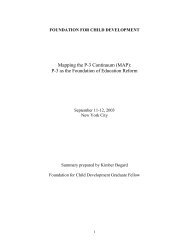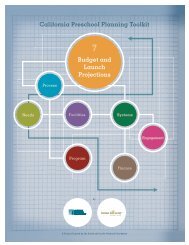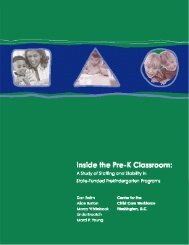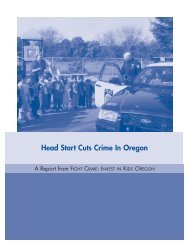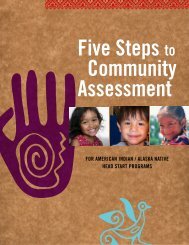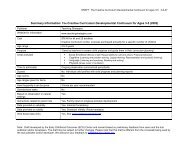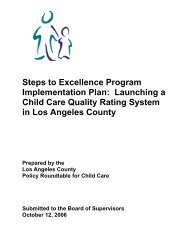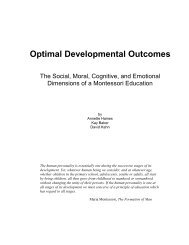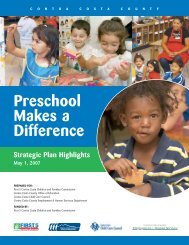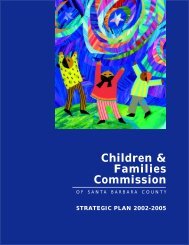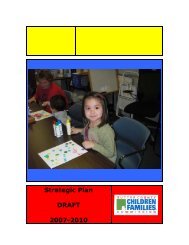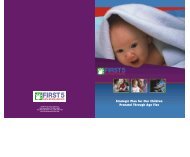Download this file - Plan4Preschool
Download this file - Plan4Preschool
Download this file - Plan4Preschool
Create successful ePaper yourself
Turn your PDF publications into a flip-book with our unique Google optimized e-Paper software.
English Learner Students <br />
In the 2005-06 school year, there were nearly 1.6 million English learners in California<br />
public schools, nearly the same level as in 2004-05. The California Department of<br />
Education provides assistance to local schools and districts to achieve the following<br />
goals:<br />
• Offer instruction to promote the English language development (ELD) of English<br />
learners so that these students reach levels of proficiency commensurate with<br />
native speakers of English.<br />
• Eliminate the academic gap that separates English learners from their native <br />
English-speaking peers. <br />
• Support English learners to help them achieve, within a reasonable period of time,<br />
the same rigorous grade-level academic standards that are expected of all<br />
students.<br />
Basic Facts—California Language Census, Spring 2005<br />
English learners constitute a significant portion of California public school students:<br />
• The 1,571,463 English learners constitute almost 25 percent of the total <br />
enrollment in California public schools. <br />
• 2,695,428 students speak a language other than English in their homes. This <br />
represents about 42 percent of the state’s public school enrollment. <br />
• The majority of English learners (about 67 percent) are enrolled in the elementary<br />
grades, kindergarten through grade six. Thirty-three percent are enrolled in the<br />
secondary grades, seven through twelve.<br />
English learners come from many language groups, but approximately 95 percent<br />
speak one of the top ten languages in the state:<br />
• The top ten language groups in rank order are (1) Spanish, 85.4 percent;<br />
(2) Vietnamese, 2.2 percent; (3) Cantonese, 1.4 percent; (4) Hmong, 1.4 percent;<br />
(5) Pilipino (Filipino or Tagalog), 1.4 percent; (6) Korean, 1.0 percent;<br />
(7) Mandarin, 0.8 percent; (8) Punjabi, 0.6 percent; (9) Armenian, 0.6 percent; and<br />
(10) Khmer, 0.5 percent, and Cambodian, 0.5 percent.<br />
English learners are placed in specific instructional settings in accord with the statutes<br />
and regulations established by Proposition 227:<br />
• 737,337 (47 percent) English learners are enrolled in structured English <br />
immersion settings. <br />
• 106,055 (7 percent) English learners have been placed in an alternative program<br />
(e.g., bilingual instruction) as a result of a parental waiver.<br />
84



